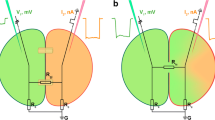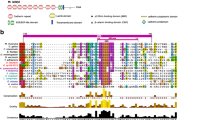Abstract
Cell junctions and the extracellular matrix (ECM) are crucial components in intercellular communication. These systems are thought to have become highly diversified during the course of vertebrate evolution. In the present study, we have examined whether the ancestral chordate already had such vertebrate systems for intercellular communication, for which we have searched the genome of the ascidian Ciona intestinalis. From this molecular perspective, the Ciona genome contains genes that encode protein components of tight junctions, hemidesmosomes and connexin-based gap junctions, as well as of adherens junctions and focal adhesions, but it does not have those for desmosomes. The latter omission is curious, and the ascidian type-I cadherins may represent an ancestral form of the vertebrate type-I cadherins and desmosomal cadherins, while Ci-Plakin may represent an ancestral protein of the vertebrate desmoplakins and plectins. If this is the case, then ascidians may have retained ancestral desmosome-like structures, as suggested by previous electron-microscopic observations. In addition, ECM genes that have been regarded as vertebrate-specific were also found in the Ciona genome. These results suggest that the last common ancestor shared by ascidians and vertebrates, the ancestor of the entire chordate clade, had essentially the same systems of cell junctions as those in extant vertebrates. However, the number of such genes for each family in the Ciona genome is far smaller than that in vertebrate genomes. In vertebrates these ancestral cell junctions appear to have evolved into more diverse, and possibly more complex, forms, compared with those in their urochordate siblings.


Similar content being viewed by others
References
Aurrand-Lions M, Duncan L, Ballestrem C, Imhof BA (2001a) JAM-2, a novel immunoglobulin superfamily molecule, expressed by endothelial and lymphatic cells. J Biol Chem 276:2733–2741
Aurrand-Lions M, Johnson-Leger C, Wong C, Du Pasquier L, Imhof BA (2001b) Heterogeneity of endothelial junctions is reflected by differential expression and specific subcellular localization of the three JAM family members. Blood 98:3699–3707
Bateman A, Birney E, Cerruti L, Durbin R, Etwiller L, Eddy SR, Griffiths-Jones S, Howe KL, Marshall M, Sonnhammer EL (2002) The Pfam protein families database. Nucleic Acids Res 30:276–280
Bone Q (1972) The origin of chordates. Oxford University Press, London
Bruzzone R, White TW, Goodenough DA (1996) The cellular Internet: on-line with connexins. BioEssays 18:709–718
Burke RD (1999) Invertebrate integrins: structure, function, and evolution. Int Rev Cytol 191:257–284
Cameron CB, Garey JR, Swalla BJ (2000) Evolution of the chordate body plan: new insights from phylogenetic analyses of deuterostome phyla. Proc Natl Acad Sci USA 97:4469–4474
Chervitz SA, Aravind L, Sherlock G, Ball CA, Koonin EV, Dwight SS, Harris MA, Dolinski K, Mohr S, Smith T, Weng S, Cherry JM, Botstein D (1998) Comparison of the complete proteins sets of worm and yeast: orthology and divergence. Science 282:2022–2028
Chiba S, Awazu S, Itoh M, Chin-Bow ST, Satoh N, Satou Y, Hastings KEM (2003) A genomewide survey of developmentally relevant genes in Ciona intestinalis. IX. Genes for muscle structural proteins. Dev Genes Evol DOI 10.1007/s00427-003-0324-x
Cloney RA (1972) Cytoplasmic filaments and morphogenesis effects of cytochalasin B on contractile epidermal cells. Z Zellforsch Mikrosk Anat 132:167–192
Colognato H, Yurchenco PD (2000) Form and function: the laminin family of heterotrimers. Dev Dyn 218:213–234
D'Atri F, Citi S (2002) Molecular complexity of vertebrate tight junctions. Mol Membrane Biol 19:103–112
Dehal P, Satou Y, Campbell RK, et al (2002) The draft genome of Ciona intestinalis: insights into chordate and vertebrate origins. Science 298:2157–2167
Evans WH, Martin PE (2002) Gap junctions: structure and function. Mol Membrane Biol 19:121–136
Garrod DR, Merritt AJ, Nie ZX (2002) Desmosomal adhesion: structural basis, molecular mechanism and regulation. Mol Membrane Biol 19:81–94
Garstang W (1928) The morphology of the Tunicata, and its bearings on the phylogeny of the Chordata. Q J Microsc Sci 72:51–187
Georges D (1979) Gap and tight junctions in tunicates. Study in conventional and freeze-fracture techniques. Tissue Cell 11:781–792
Hino K, Satou Y, Yagi K, Satoh N (2003) A genomewide survey of developmentally relevant genes in Ciona intestinalis. VI. Genes for Wnt, TGFβ, Hedgehog and JAK/STAT signaling pathways. Dev Genes Evol DOI 10.1007/s00427-003-318-8
Horwitz A, Duggan K, Buck C, Beckerle MC, Burridge K (1986) Interaction of plasma membrane fibronectin receptor with talin--a transmembrane linkage. Nature 320:531–533
Hotta K, Takahashi H, Asakura T, Saitoh B, Takatori N, Satou Y, Satoh N (2000) Characterization of Brachyury-downstream notochord genes in the Ciona intestinalis embryo. Dev Biol 224:69–80
Huber JD, Egleton RD, Davis TP (2001) Molecular physiology and pathophysiology of tight junctions in the blood-brain barrier. Trends Neurosci 24:719–725
Hutter H, Vogel BE, Plenefisch JD, Norris CR, Proenca RB, Spieth J, Guo C, Mastwal S, Zhu X, Scheel J, Hedgecock EM (2000) Conservation and novelty in the evolution of cell adhesion and extracellular matrix genes. Science 287:989–994
Hynes RO (2002) Integrins: bidirectional, allosteric signaling machines. Cell 110:673–687
Hynes RO, Zhao Q (2000) The evolution of cell adhesion. J Cell Biol 150:F85–F95
Imai K, Takada N, Satoh N, Satou Y (2000) β-Catenin mediates the specification of endoderm cells in ascidian embryos. Development 127:3009–3020
Itoh M, Furuse M, Morita K, Kubota K, Saitou M, Tsukita S (1999) Direct binding of three tight junction-associated MAGUKs, ZO-1, ZO-2, and ZO-3, with the COOH termini of claudins. J Cell Biol 147:1351–1363
Janssens B, Goossens S, Staes K, Gilbert B, van Hengel J, Colpaert C, Bruyneel E, Mareel M, van Roy F (2001) αT-Catenin: a novel tissue-specific β-catenin-binding protein mediating strong cell-cell adhesion. J Cell Sci 114:3177–3188
Kaiser D (2001) Building a multicellular organism. Ann Rev Genet 35:103–123
Kollmar R, Nakamura SK, Kappler JA, Hudspeth AJ (2001) Expression and phylogeny of claudins in vertebrate primordia. Proc Natl Acad Sci USA 98:10196–10201
Kumar NM, Gilula NB (1996) The gap junction communication channel. Cell 84:381–388
Lane NJ, Dallai R, Burighel P, Martinucci GB (1986) Tight and gap junctions in the intestinal tract of tunicates (Urochordata): a freeze-fracture study. J Cell Sci 84:1-17
Letunic I, Goodstadt L, Dickens NJ, Doerks T, Schultz J, Mott R, Ciccarelli F, Copley RR, Ponting CP, Bork P (2002) Recent improvements to the SMART domain-based sequence annotation resource. Nucleic Acids Res 30:242–244
Levi L, Douek J, Osman M, Bosch TC, Rinkevich B (1997) Cloning and characterization of BS-cadherin, a novel cadherin from the colonial urochordate Botryllus schlosseri. Gene 200:117–123
Lorber V, Rayns DG (1972) Cellular junctions in the tunicate heart. J Cell Sci 10:211–227
Martin-Padura I, Lostaglio S, Schneemann M, Williams L, Romano M, Fruscella P, Panzeri C, Stoppacciaro A, Ruco L, Villa A, Simmons D, Dejana E (1998) Junctional adhesion molecule, a novel member of the immunoglobulin superfamily that distributes at intercellular junctions and modulates monocyte transmigration. J Cell Biol 142:117–127
McMahan UJ (1990) The agrin hypothesis. Cold Spring Harbor Symp Quant Biol 50:407–418
Meinertzhagen IA, Okamura Y (2001) The larval ascidian nervous system: the chordate brain from its small beginnings. Trends Neurosci 24:401–410
Miyazawa S, Azumi K, Nonaka M (2001) Cloning and characterization of integrin α subunits from the solitary ascidian, Halocynthia roretzi. J Immunol 166:1710–1715
Moroi S, Saitou M, Fujimoto K, Sakakibara A, Furuse M, Yoshida O, Tsukita S (1998) Occludin is concentrated at tight junctions of mouse/rat but not human/guinea pig Sertoli cells in testes. Am J Physiol 274:C1708–C1717
Nollet F, Kools P, van Roy F (2000) Phylogenetic analysis of the cadherin superfamily allows identification of six major subfamilies besides several solitary members. J Mol Biol 299:551–572
O'Brien J, Bruzzone R, White TW, Al-Ubaidi MR, Ripps H (1998) Cloning and expression of two related connexins from the perch retina define a distinct subgroup of the connexin family. J Neurosci 18:7625–7637
Oda H, Tsukita S (1999) Nonchordate classic cadherins have a structurally and functionally unique domain that is absent from chordate classic cadherins. Dev Biol 216:406–422
Oda H, Wada H, Tagawa K, Akiyama-Oda Y, Satoh N, Humphreys T, Zhang S, Tsukita S (2002) A novel amphioxus cadherin that localizes to epithelial adherens junctions has an unusual domain organization with implications for chordate phylogeny. Evol Dev 4:426–434
Panchin Y, Kelmanson I, Matz M, Lukyanov K, Usman N, Lukyanov S (2000) A ubiquitous family of putative gap junction molecules. Curr Biol 10:R473–474
Phelan P, Starich TA (2001) Innexins get into the gap. BioEssays 23:388–396
Phelan P, Bacon JP, Davies JA, et al (1999) Innexins: a family of invertebrate gap-junction proteins. Trends Genet 14:348–349
Rubin GM, Yandell MD, Wortman JR, et al (2000) Comparative genomics of the eukaryotes. Science 287:2204–2215
Saitou M, Fujimoto K, Doi Y, Itoh M, Fujimoto T, Furuse M, Takano H, Noda T, Tsukita S (1998) Occludin-deficient embryonic stem cells can differentiate into polarized epithelial cells bearing tight junctions. J Cell Biol 141:397–408
Sasakura Y, Yamada L, Takatori N, Satou Y, Satoh N (2003) A genomewide survey of developmentally relevant genes in Ciona intestinalis. VII. Molecules involved in the regulation of cell polarity and actin dynamics. Dev Genes Evol DOI 10.1007/s00427-003-325-9
Satou Y, Chiba S, Satoh N (1999) Expression cloning of an ascidian syndecan suggests its role in embryonic cell adhesion and morphogenesis. Dev Biol 211:198–207
Satou Y, Imai KS, Satoh N (2001) Early embryonic expression of a LIM-homeobox gene Cs-lhx3 is downstream of β-catenin and responsible for the endoderm differentiation in Ciona savignyi embryos. Development 128:3559–3570
Satou Y, Yamada L, Mochizuki Y, Takatori N, Kawashima T, Sasaki A, Hamaguchi M, Awazu S, Yagi K, Sasakura Y, Nakayama A, Ishikawa H, Inaba K, Satoh N (2002) A cDNA resource from the basal chordate Ciona intestinalis. Genesis 33:153–154
Satou Y, Imai KS, Levine M, Kohara Y, Rokhsar D, Satoh N (2003) A genomewide survey of developmentally relevant genes in Ciona intestinalis. I. Genes for bHLH transcription factors. Dev Genes Evol DOI 10.1007/s00427-003-319-7
Selleck SB (2000) Proteoglycans and pattern formation: sugar biochemistry meets developmental genetics. Trends Genet 16:206–212
Sharma CP, Ezzell RM, Arnaout MA (1995) Direct interaction of filamin (ABP-280) with the beta 2-integrin subunit CD18. J Immunol 154:3461–3470
Tepass U (2002) Adherens junctions: new insight into assembly, modulation and function. BioEssays 24:690–695
Tsukita S, Furuse M, Itoh M (2001) Multifunctional strands in tight junctions. Nature Rev Mol Cell Biol 2:285–293
Usui T, Shima Y, Shimada Y, Hirano S, Burgess RW, Schwartz TL, Takeichi M, Uemura T (1999) Flamingo, a seven-pass transmembrane cadherin, regulates planar cell polarity under the control of frizzled. Cell 98:585–595
Wada H, Satoh N (1994) Details of the evolutionary history from invertebrates to vertebrates, as deduced from the sequences of 18S rDNA. Proc Natl Acad Sci USA 91:1801–1804
Wang J, Karabinos A, Zimek A, Meyer M, Riemer D, Hudson C, Lemaire P, Weber K (2002) Cytoplasmic intermediate filament protein expression in tunicate development: a specific marker for the test cells. Eur J Cell Biol 81:302–311
Acknowledgements
This research was supported by Grants-in-Aid for Scientific Research from MEXT, Japan to Y. Satou (13044001) and N.S. (12202001), by a CREST project of Japan Science and Technology Corporation (N.S., E.S., and S.W.) and by support from NSERC, Ottawa (to I.A.M.). Y. Sasakura was a Postdoctoral Fellow of JSPS with research grant no. 14000967. We thank Kazuko Hirayama, Chikako Imaizumi, Asako Fujimoto, and Hisayoshi Ishikawa for their technical support.
Author information
Authors and Affiliations
Corresponding author
Additional information
Edited by D. Tautz
The first two authors contributed equally to this work
Electronic supplementary material
Rights and permissions
About this article
Cite this article
Sasakura, Y., Shoguchi, E., Takatori, N. et al. A genomewide survey of developmentally relevant genes in Ciona intestinalis . Dev Genes Evol 213, 303–313 (2003). https://doi.org/10.1007/s00427-003-0320-1
Received:
Accepted:
Published:
Issue Date:
DOI: https://doi.org/10.1007/s00427-003-0320-1




